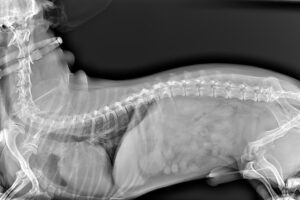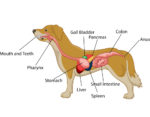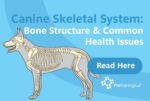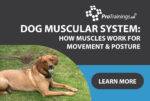The Heart’s Role in Maintaining Overall Health The heart is at the core of a dog’s circulatory system. This muscular, four-chambered organ is a powerful pump that propels blood throughout the body. Its primary purpose is to ensure that oxygen-rich blood reaches all tissues while oxygen-depleted blood is returned to the lungs for replenishment. In […]
Comprehensive Guide to Canine Anatomy and Health
 The Canine Skeletal System
The Canine Skeletal System
The skeletal system provides the framework for your dog’s body, supporting movement and protecting vital organs. Key components include:
- Bone Structure: Dogs have over 300 bones that vary in shape and size, facilitating diverse functions from locomotion to protection.
- Joint Types: Various joints, such as hinge and ball-and-socket, allow for a range of movements.
Common skeletal issues include fractures and arthritis. Regular exercise and a balanced diet can help maintain bone health.
The Muscular System
Muscles work in conjunction with the skeletal system to facilitate movement and maintain posture. The muscular system comprises:
- Skeletal Muscles: Responsible for voluntary movements like walking and jumping.
- Cardiac Muscle: The heart muscle, essential for pumping blood.
- Smooth Muscles: Found in internal organs, controlling involuntary actions like digestion.
Maintaining muscle health involves regular physical activity and proper nutrition.
The Nervous System
The nervous system controls and coordinates all bodily functions, processing sensory information and directing responses. It consists of:
- Central Nervous System (CNS): Comprising the brain and spinal cord, it processes information and issues commands.
- Peripheral Nervous System (PNS): Nerves extending throughout the body, transmitting signals between the CNS and other body parts.
Signs of nervous system disorders include seizures, tremors, and uncoordinated movements. Prompt veterinary attention is crucial if such symptoms arise.
Maintaining Your Dog’s Health
Proactive care is vital for ensuring the well-being of your dog’s body systems:
- Regular Veterinary Check-ups: Routine exams can detect and address health issues early.
- Balanced Diet: Proper nutrition supports all body systems.
- Consistent Exercise: Physical activity maintains muscle and bone health.
- Mental Stimulation: Engaging activities support nervous system function.
For more detailed information on canine anatomy and health, explore our related articles:
Further Resources
Enhance your understanding and ability to care for your dog with these resources:
- Pet First Aid Training Courses
- Comprehensive Pet First Aid Kits
- Additional Articles on Canine Anatomy and Health
For professional training, consider enrolling in our Advanced Pet First Aid Level 3 (VTQ) course.










